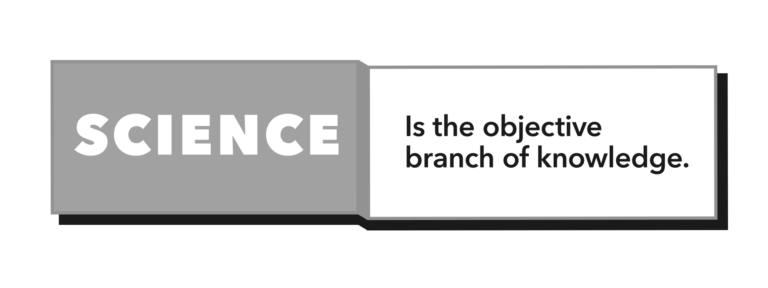This series tackles the problem of constructing a formal definition of modern science, developing a definition that meets the needs of practitioners. In our category of “practitioners of modern science,” we include those working in fields wherein a successful outcome is immediately and visibly dependent upon accurate prediction, such as technology and industry. This definition and its implications are also useful, maybe essential, to any individual seeking to understand reality in terms of cause and effect, or to engage thoughtfully with the products of scientific inquiry and practice. It is a definition that provides clarity — and an understanding that cultivates a healthy skepticism — in the chaotic world of pop science, sensational health headlines, and the creeping dominance of “scientific” fields such as nutritional epidemiology.
In the process of constructing a definition, we analyze our expectations of science. The process begins with an examination of the limits of human perception and knowledge. Our need to break through the bounds of individual perceptions is the same as our need to share knowledge and creates a requirement for objectivity. This leads to both a definition and a mission statement for science, which is the objective branch of knowledge.

In addition to knowledge and objectivity, key words in the defining process include creativity, discovery, language, logic, mathematics, measurements, models, predictions, and validation. All of these can be structured within the scientific method, as we will explore.
What qualifies as science is that which practices the scientific method. How far an art or a model within an art can go in satisfying the method yields criteria for acceptance or rejection. The same criteria provide quality ratings that everyone can apply unambiguously to the state of development of an art or a scientific model. The resulting subjective model grades through four progressive and familiar stages: conjecture, hypothesis, theory, and law.
Science Defined
We must offer a definition of science in order for it to be rationally taught. Science demands precision in language, and it cannot thrive without it.
- Science is a branch of knowledge. Science is not an obscure occupation, safely ignored by anyone who might lack interest in its study or by the intellectually lazy. It is impossible to escape its realities and consequences.
- Science is the objective branch of knowledge. Science has no bounds to its domain other than dealing with things that man can define, record, measure, and quantify or order. Even these attributes will not assure objectivity, as even a group of well-trained observers can fool themselves into thinking that the group has made a discovery. From early childhood, each person’s senses and mental models shape their perceptions of the real world. These models are created by the brain and, in spite of their imperfection, are essential for the interpretation of our senses. These models are the essence of both observation and subjectivity, and they can be improved through training in science.
- Science is shared, public knowledge. Objectivity, the stripping of the subjective from our mental models, comes from open sharing. Sharing mandates the least ambiguity. Openness allows criticism and growth. Sharing allows others to make similar observations in spite of their subjective biases. It empowers many brains to concentrate coherently on a subject. We can distinguish this from the post-modern science emphasis on consensus, which constructs a paradigm whereby votes or popularity define a result rather than open-source, critical testing.
- Science creates models that account for observations of the real world. Science creates objective models that replace private, subjective models. These scientific models account for all relevant facts in their domain and predict new phenomena or relationships.
- Scientific models build on measurements of the observations. Measurements, the result of comparing observations with standards, provide consistency in observations and permit the sharing of experiences in an objective way. Measurements create facts; facts are measurements.
- Scientific models require validation through demonstrated predictions of qualitatively new phenomena or relationships. A qualitatively new phenomenon is one involving different parameters than those that formed the facts the scientist used to create the model.
Objective knowledge evolves like life, proceeding randomly from a settled base into perpetually new territories. The progress may be guided by the most intelligent humans on Earth, but it is random because success has a large unpredictable component. Strong theories survive, subsuming weak theories or abandoning them to die. Complex ideas build on the simple. The trends are positive, and the process is irreversible.
This series includes revised text from Evolution in Science, 1995, by Jeff Glassman, Ph.D., adapted with permission.